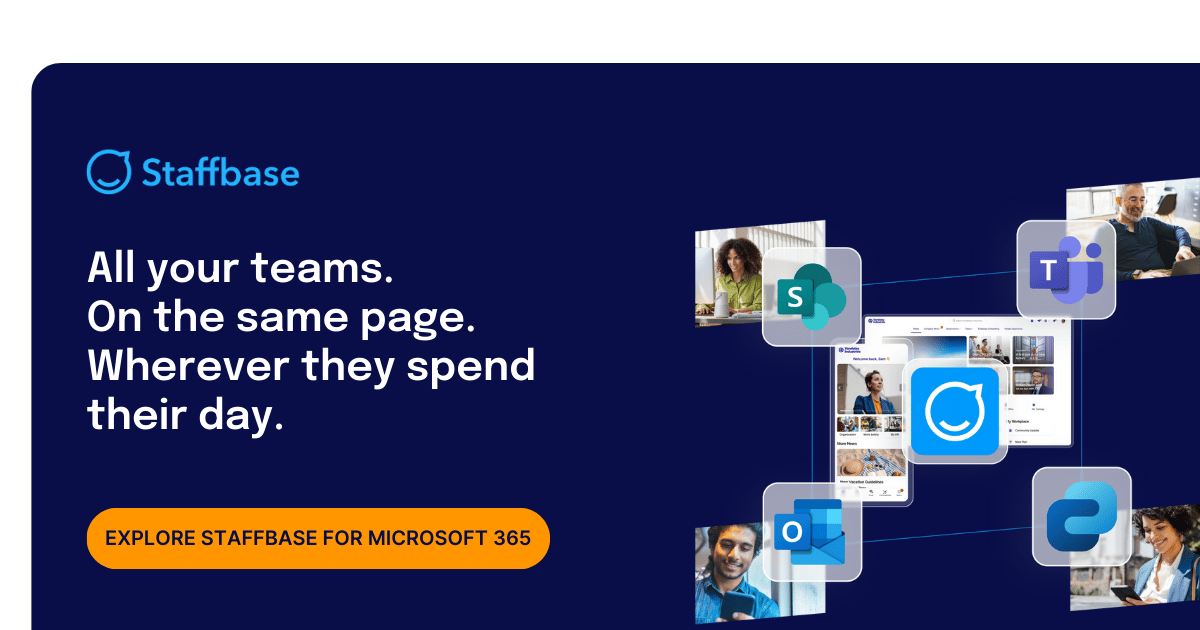8 Reasons Slack and Teams Aren’t Enough for Effective Internal Communication
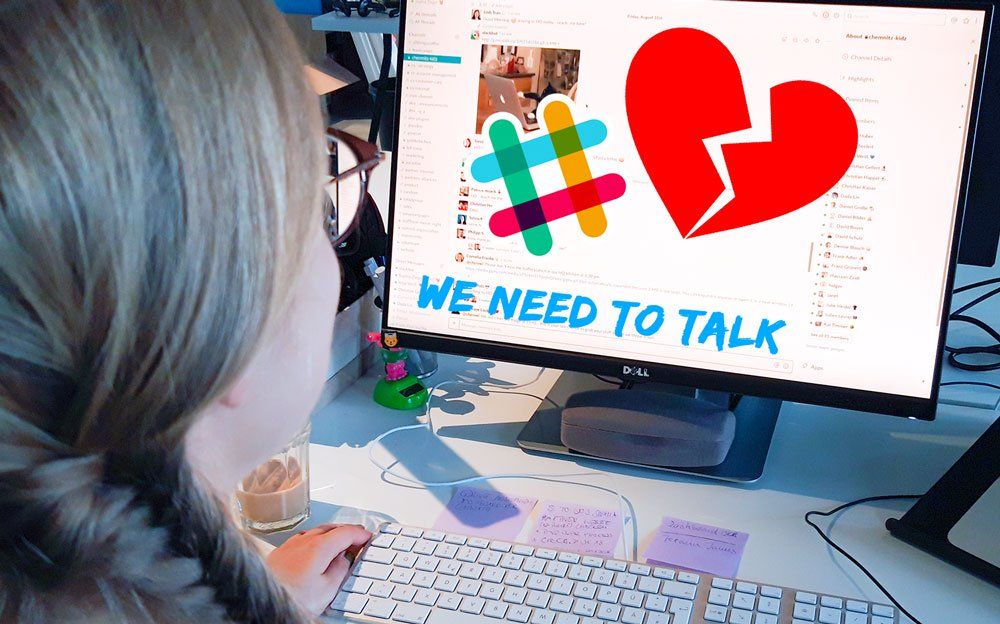
Slack is great. It truly is. People love it. It even has its own Rihanna gif! As for Microsoft Teams, it really took off when the lockdowns of 2020 made it a necessity, and it’s been going strong ever since.
Slack and Teams are great at collaboration, transparency, and employee-to-employee-communication. In the collaboration department, these tools make sharing documents and working on them easy and fast. Comments are shown in one thread and can all be found in one place. Getting instant feedback has never been more effortless. Also, Slack and Teams make every conversation and document, and every team, transparent.
Slack stands for “Searchable Log of All Conversation and Knowledge” and that’s literally what it is. Both tools totally enable employee-to-employee communication. No matter whether your team sits in one office or is spread across the world, you can really get conversations going — and to be honest, we all love the gifs and memes, don’t we?
But should Slack and Microsoft Teams be your one and only tool for internal communications? We think not. Here’s why.
1. Threaded Communication
Slack and Teams are designed so that readers see messages in a stream, much like we do with Facebook and WhatsApp, with newest messages shown first. In addition, users can react to messages directly and create a thread which then functions as its own little communication universe.
Now let’s say the head of Internal Communications wants to post an important message. There are two possible ways this could go: First, people will react both in the stream and in the thread, making it very difficult to follow the conversation for both the user and the admin. Secondly, messages will be quickly buried under new messages, making them harder to find.
None of these scenarios help the Internal Communicator to get her message across and follow reactions to it.

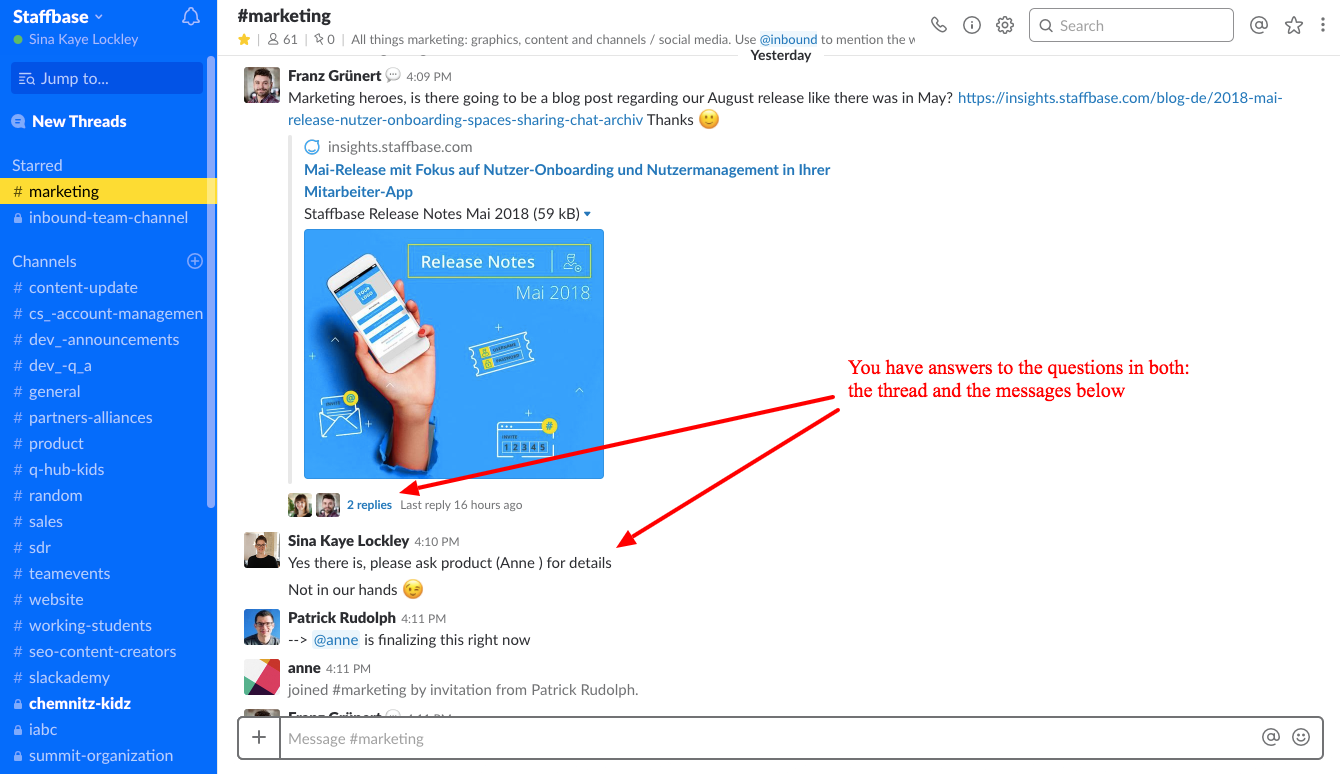
Slack and Teams are great for collaboration and conversation, but they aren’t geared towards dealing with immediate business problems. Messages can’t cut through the constant noise created by the tool. And while employee-to-employee communications work well in Slack and reduce email clutter, employer-to-employee communication can often get lost.
2. There’s No Holding Back
Every room in Slack and Microsoft Teams is created so that every employee can comment, like, and share. This is mostly great, especially with all of the emoji action. The problem is that there’s no option to create a channel just for announcements in which only admins can post important messages.
In Slack, by default, every employee can create a channel that looks like this:
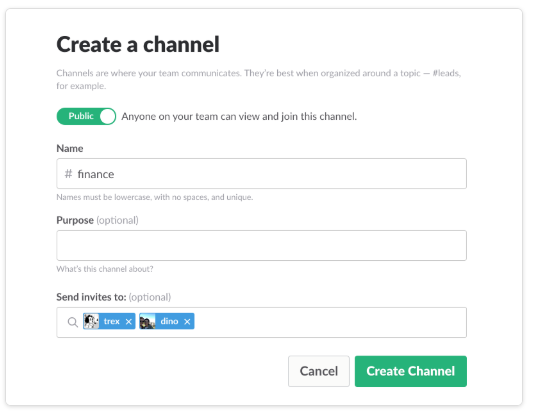
There’s an option to make the channel private, which means that only the people who were invited can join, but there’s no option to make the administrator the only contributor.
This means the Head of Internal Comms has no control over the conversations in the channels and no way to ensure that the channel “Messages from Management” (for example) actually holds messages from management. Or that a certain post can’t receive comments.
In comparison, an advanced tool like an employee app lets you create channels that are only visible to certain people and that only designate certain people as authors. In addition, each channel can be individually designed to allow for comments, likes, acknowledgements, and so on.
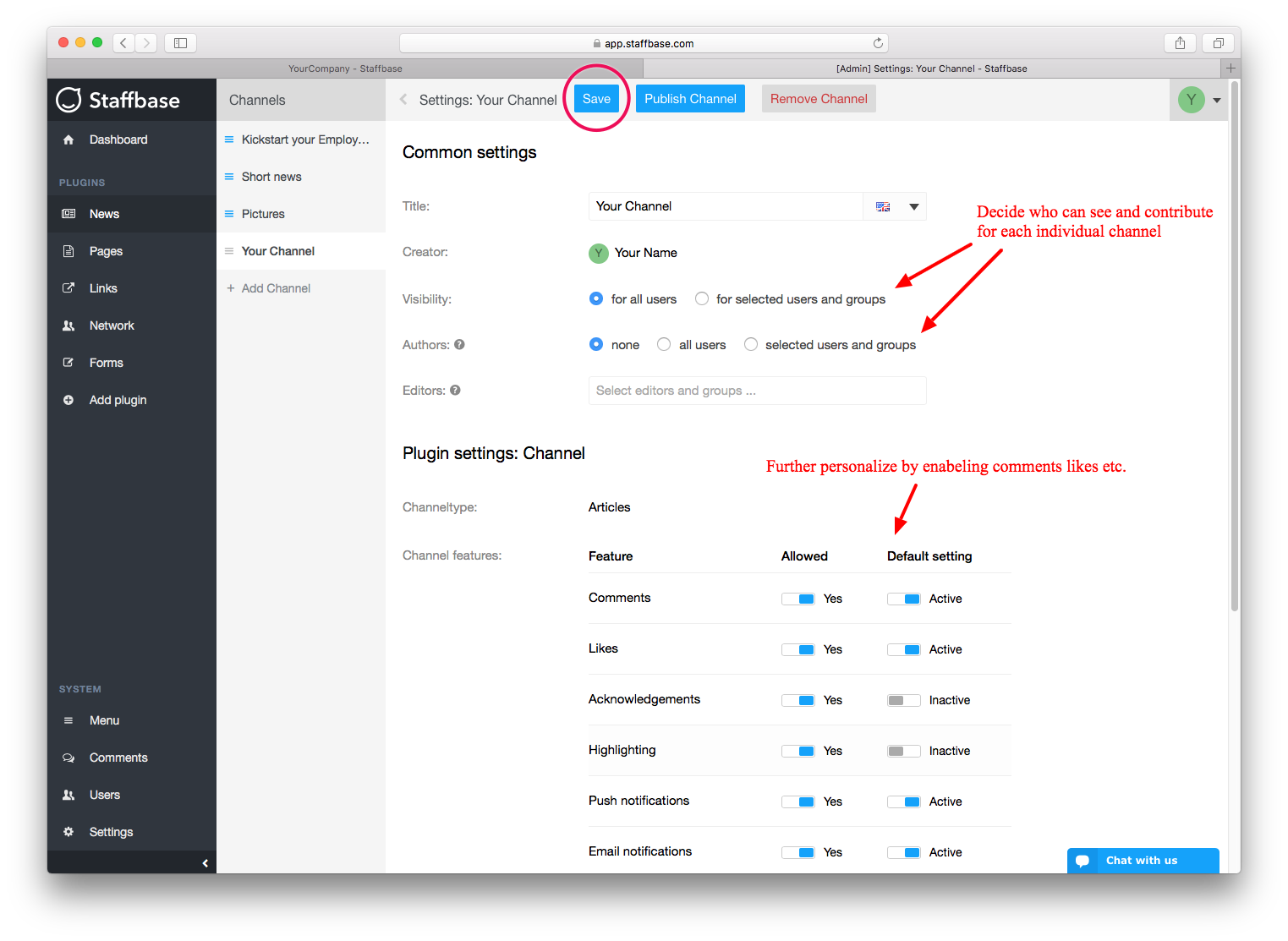
3. Big Brother Is Watching You
When implementing an internal communications tool, the first question a works council often has is: Can management see what each user is doing? The answer for Slack is uncomfortably close to yes. With the launch of the new dashboard in July 2017, admins can now see analytics data per channel and individual member.
This might present a problem when launching the tool since management can see which users have posted how many messages in the app. This is something that hardly anyone considers but that most users, and works council members, won’t appreciate.
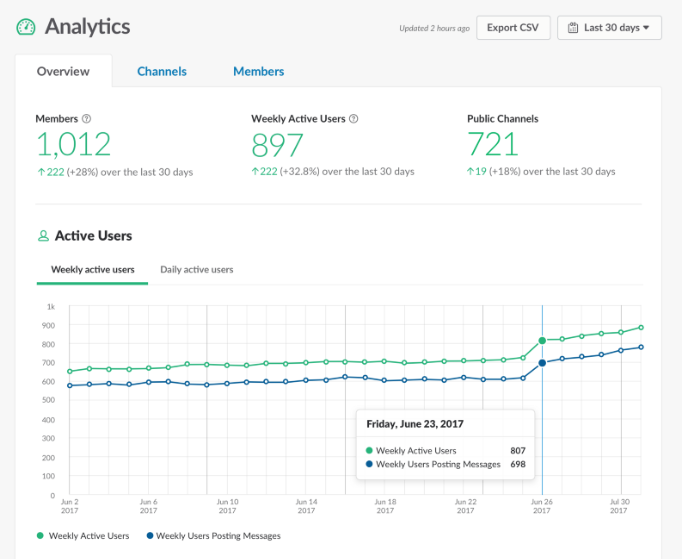
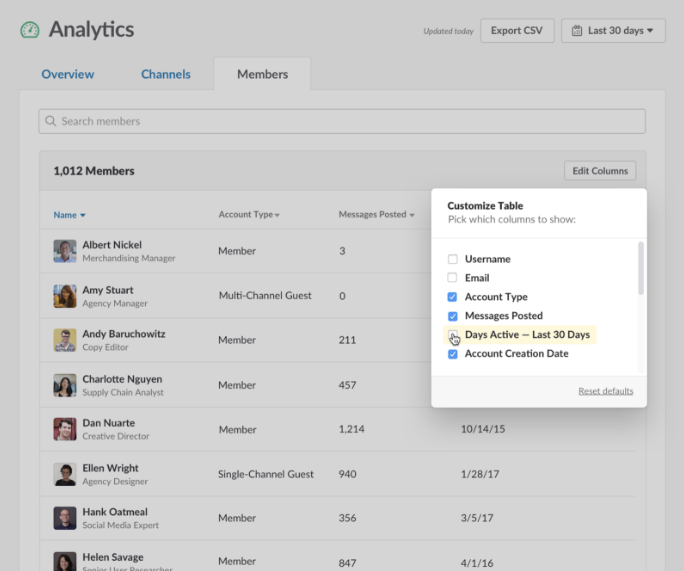
4. First Things First
Slack is an enterprise messaging and collaboration app. It’s designed for constant messaging, not for constantly spreading knowledge. What it’s missing is a start page or a front door that makes important stories and updates stand out.
Internal communication requires fixed links and articles, as you can see below in the example of a start page of the Staffbase employee app.
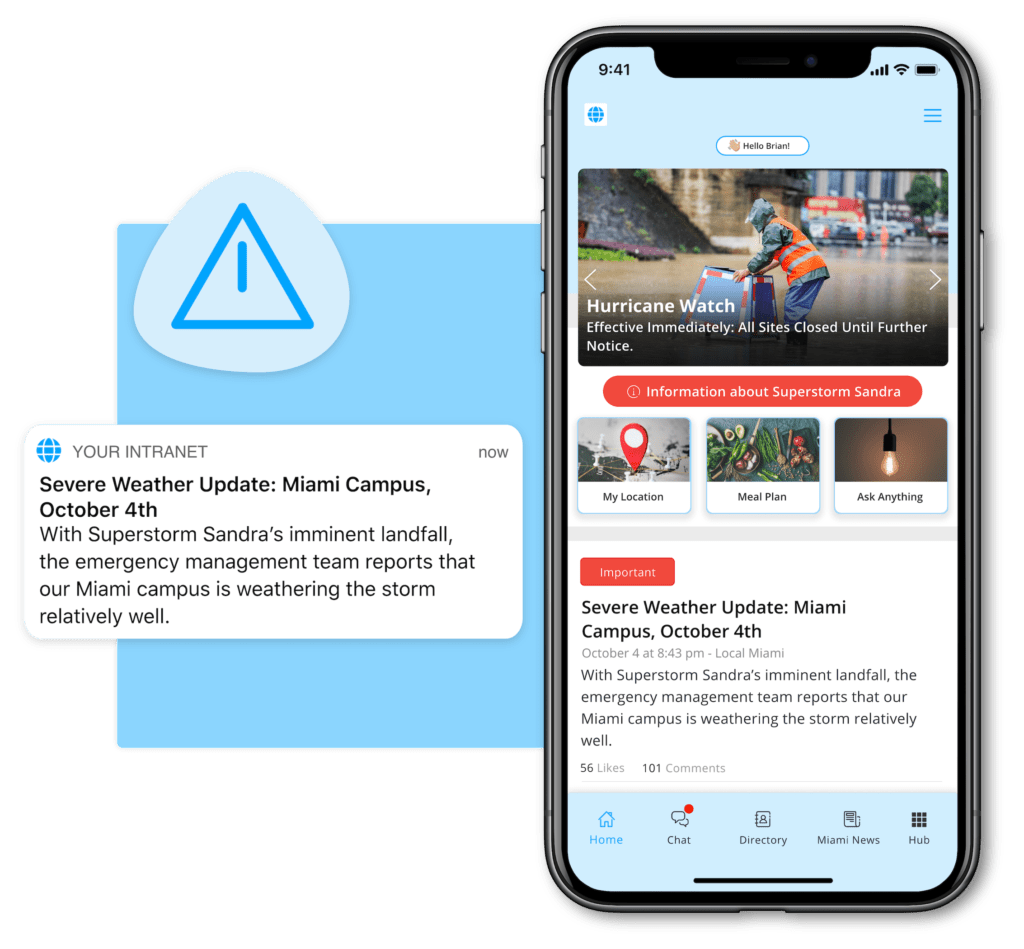
The mock-up shows both the possibility of having your most important information at the top of the page with a stage which can also feature carousel images, with the possibility of having fixed links below it.
Slack and Teams don’t give you the opportunity to present this kind of static content. Instead there’s just a constant stream of messages with no way to fix anything. Which means, in our example, the Head of Internal Communications has no way to underline the importance of the message by giving it a stage.
Users can star their messages, but this would mean that each user would have to decide from the bottom-up which messages are important — instead of such decisions being in the hands of Internal Communications or Management.
5. Stay Put!
Slack is like short-term memory: nothing stays long-term. For internal communications, it’s really important to provide documents, surveys, and onboarding information — and it’s a lot of work to provide this information over and over instead of just putting it somewhere once. Ideally your tool for internal comms has a space in which important, often used documents find a place.
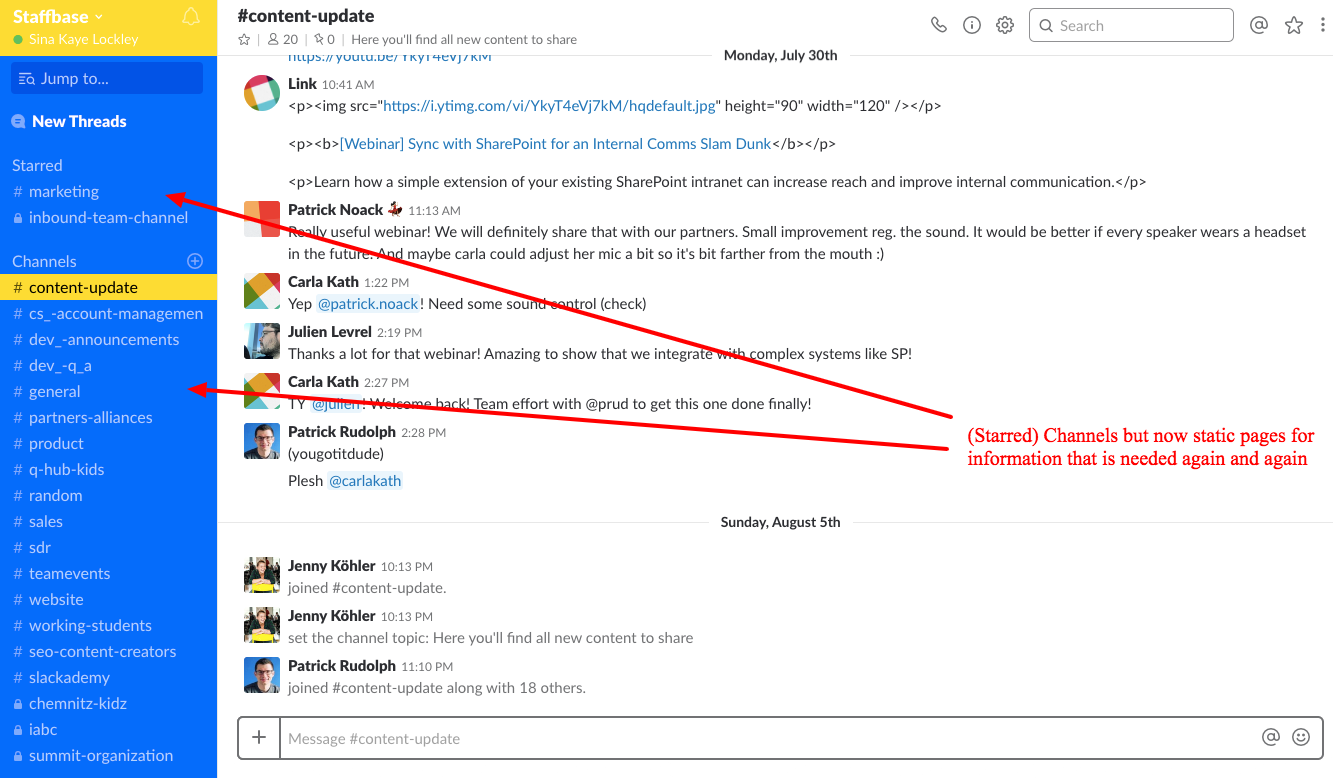
Back to our example: The Head of Internal Communications wants her company’s Code of Conduct to be available to all employees in one easy-to-find place. Slack doesn’t provide an option for this since every message gets lost in the stream. Dedicated employee communication platforms like employee apps can provide very easy access to static content, as seen in the Staffbase example below.
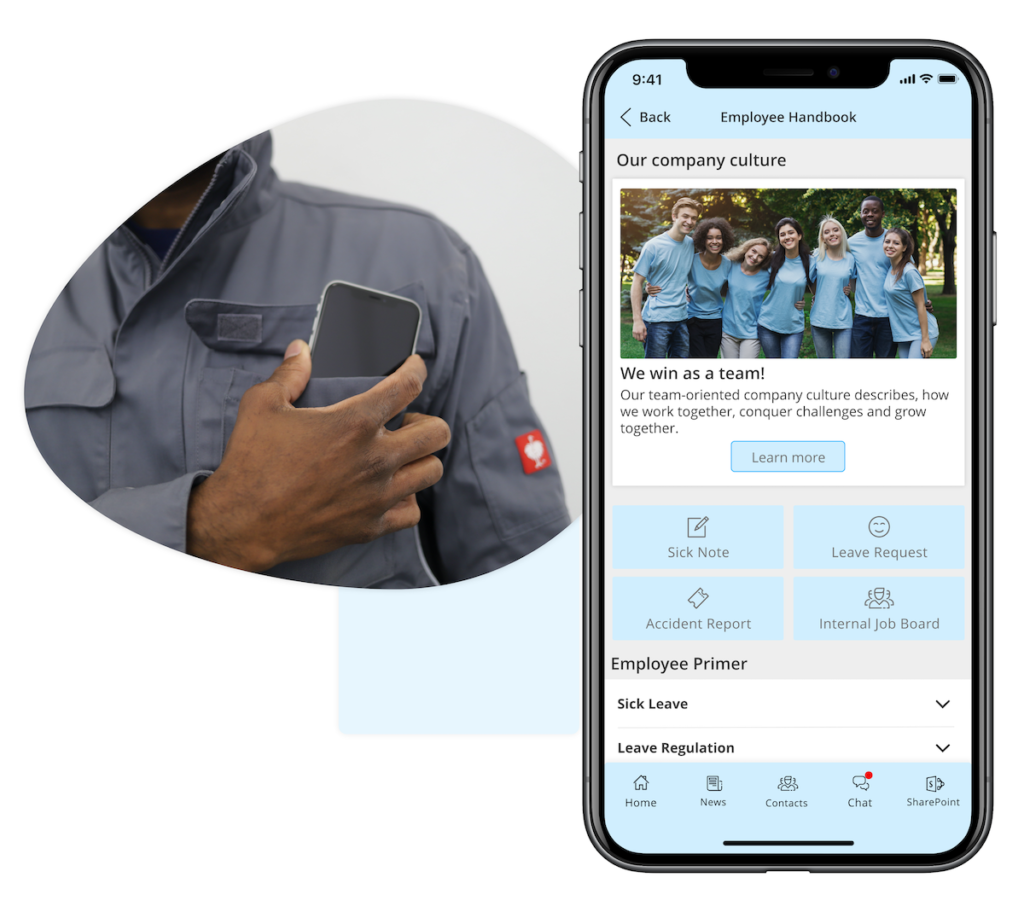
6. Confirmed ✅
Some posts, especially when it comes to security and safety regulations, need confirmation that they’ve been read. Internal Communications often need to be sure that every employee has acknowledged certain information. No such luck in Slack or Teams. You could make users like a post as a kind of replacement, but people are quick to like something they’ve only skimmed.

 The acknowledgement function in Staffbase.
The acknowledgement function in Staffbase.
Back to our example: If the Head of Internal Comms posts new security guidelines, there’s no way to ensure that every employee has read them without an acknowledgment function.
7. Out of the Loop
Slack depends on every user checking their messages regularly. The bigger the company, the less likely this will be the case. Especially with a dispersed workforce, each group and employee will show different rates of engagement. Reading through Slack messages takes a lot of time, which means it’s more likely to work as a communication channel if everybody using it is at a desk in an office. It’s not really made for non-desk workers. Being already disconnected and out of the loop, non-desk workers really struggle when they’re forced to use communication tools that aren’t designed with them in mind. Slack risks making them feel even more out of the loop than they already are.
Back to our Head of Internal Communications: If she works in a global company with a dispersed workforce, it’s very hard for her to post a message in Slack and expect that every user will read it before it vanishes under a pile of newer messages.
In addition, think of this: Those who are engaged in the conversation look like they work the most, while those who are busy completing the task at hand look less engaged.
8. Why Aren’t You Answering Me?
Chat tools such as WhatsApp are designed for real-time conversation. This means that when you message somebody, you expect a reply within the next few hours, or latest by the end of the day. Email is designed to be inherently asynchronous, which means you don’t usually expect a immediate reply.
Slack is somewhere in the middle, which makes it hard for people to know when to expect an answer. Answering time varies from a few minutes to hours — not to mention people who forget about your message entirely. In addition, users still feel like management will send an email if and when something important comes up, meaning that emails will still clutter your inbox.
9. WhatsApp Is the Way to Go . . . Just Kidding!
Slack and Microsoft Teams are enterprise ready, but they aren’t ready for internal communications. And if you’re thinking about using WhatsApp for internal communications, think again! WhatsApp should definitely not be your choice for internal comms either. While it’s great for private chatting, the support, user synchronization, and desktop version aren’t sufficient for bigger companies.
![]()
Support: It’s unnecessary to mention that organizations need immediate support if and when things aren’t working as they should. Only professional enterprise messaging services provide 24/7 monitoring and support with dedicated staff. In addition, companies often require audit-proof backup and archiving functions for compliance reasons. WhatsApp lacks both enterprise support AND audit compliance.
User Synchronization: Synchronizing employee data with WhatsApp is virtually impossible. So should you want to integrate all of your employees from a specific area into a single group, then get ready for some manual work. If employees leave or come to the company, automatic synchronization isn’t possible, meaning that employees will have to be deleted from the groups one at a time. The bigger the company the more laborious this becomes. WhatsApp also isn’t extensible for sharing extensive surveys and/or HR processes.
Insufficient Desktop Version: In addition to mobile devices and tablets, many employees also use laptops and desktop computers. Professional desktop versions for Windows and Mac and tablet versions for iOS, Android, and Windows Phones are a core component of a complete enterprise messaging solution. WhatsApp offers only a weak desktop version that needs a permanently connection to your phone in order to function properly.
Don’t get us wrong: Slack and Microsoft Teams do what they do really well. Meaning collaboration and employee-to-employee communication. But when it comes to really fulfilling your strategy for employer-to-employee communication, you’ll need a better tool.







